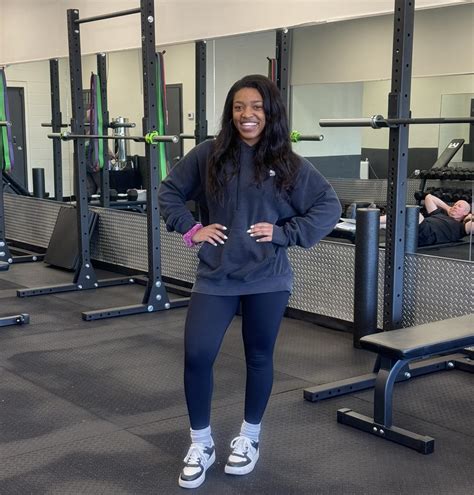Time-efficient workouts for maximum strength & peak performance?

The Power of Efficiency: Maximize Gains in Minimal Time
In today’s fast-paced world, finding hours to dedicate to the gym can feel like an impossible task. Yet, the desire for maximum strength and peak physical performance remains strong. The good news is that you don’t need to live in the gym to achieve remarkable results. By strategically optimizing your training, you can build significant strength and enhance your performance with highly time-efficient workouts. This article will guide you through the principles and techniques to make every minute count.
High-Intensity Interval Training (HIIT) for Strength
Often associated with cardio, HIIT can be incredibly effective for strength development when adapted correctly. Instead of long, steady-state sessions, HIIT involves short bursts of intense effort followed by brief recovery periods. For strength, this means performing compound resistance exercises or plyometrics with maximum effort, pushing your muscles to their limits, and then resting just long enough to maintain intensity for the next set.
This approach not only elevates your heart rate and burns calories but also creates a significant metabolic demand that stimulates muscle growth and improves muscular endurance. Think bodyweight circuits with minimal rest, or weighted exercises performed in an EMOM (Every Minute On the Minute) format.

Compound Movements: Your Strength Superheroes
If time is a constraint, compound exercises should form the backbone of your routine. These are multi-joint movements that engage several muscle groups simultaneously, making them incredibly efficient for building overall strength and muscle mass. Instead of isolating one muscle with multiple exercises, a single compound movement works an entire chain of muscles.
- Squats: Works quads, glutes, hamstrings, core.
- Deadlifts: Engages hamstrings, glutes, back, core, forearms.
- Bench Press: Targets chest, shoulders, triceps.
- Overhead Press: Strengthens shoulders, triceps, upper back, core.
- Rows: Develops back, biceps, forearms.
By focusing on these foundational movements, you get more bang for your buck, stimulating more muscle fibers and driving greater systemic adaptation in less time.
The Magic of Supersets and Tri-sets
To further reduce rest time and increase your workout’s density, incorporate supersets and tri-sets. A superset involves performing two exercises back-to-back with minimal or no rest in between. Tri-sets extend this to three consecutive exercises. This method keeps your heart rate up and allows you to do more work in the same amount of time.
There are several ways to structure them:
- Antagonistic Supersets: Pair exercises for opposing muscle groups (e.g., bench press immediately followed by bent-over rows).
- Same-Muscle-Group Supersets: Perform two exercises for the same muscle group, one compound and one isolation (e.g., squats followed by leg extensions) to achieve maximum fatigue.
- Full-Body Supersets: Combine an upper body push, upper body pull, and lower body exercise.

Progressive Overload in Minimal Time
Regardless of how time-efficient your workouts are, the principle of progressive overload remains crucial for building strength. This means continuously challenging your muscles to do more than they are accustomed to. In a time-crunched scenario, this might mean:
- Increasing the weight while maintaining rep count.
- Performing more reps with the same weight.
- Decreasing rest times between sets.
- Improving exercise form and control.
- Increasing the frequency of training a muscle group.
Focus on quality over quantity. Even if you’re only doing 3 sets of an exercise, make those sets count by pushing close to failure with proper form. Document your progress to ensure you’re always striving for improvement.

Sample Time-Efficient Full-Body Strength Routine (30-40 Mins)
Here’s an example of how you can combine these principles into a powerful, time-saving workout:
- Warm-up (5-7 minutes): Light cardio (jogging, jumping jacks) followed by dynamic stretches (arm circles, leg swings, bodyweight squats).
- Workout (20-30 minutes): Perform the following as supersets or circuits, with 60-90 seconds rest after each complete superset/circuit.
- Superset 1 (3-4 sets):
- Barbell Back Squats (8-12 reps)
- Push-ups or Dumbbell Bench Press (as many reps as possible / 8-12 reps)
- Superset 2 (3-4 sets):
- Dumbbell Romanian Deadlifts (10-15 reps)
- Pull-ups or Lat Pulldowns (6-12 reps)
- Superset 3 (2-3 sets):
- Overhead Press (8-12 reps)
- Plank (30-60 seconds hold)
- Superset 1 (3-4 sets):
- Cool-down (5 minutes): Static stretches focusing on major muscle groups worked.

Beyond the Weights: The Role of Recovery and Nutrition
No matter how efficient your workouts, they will only yield maximum results if supported by adequate recovery and proper nutrition. Prioritize 7-9 hours of quality sleep, consume sufficient protein to support muscle repair and growth, and ensure your diet provides the energy needed for intense training. These elements are not add-ons; they are integral to achieving peak performance and strength.

Conclusion: Train Smarter, Not Just Harder
Achieving maximum strength and peak performance doesn’t require endless hours in the gym. By embracing time-efficient strategies like intelligent HIIT, compound movements, supersets, and consistent progressive overload, you can build an incredibly effective routine. Focus on intensity, consistency, and smart programming, and you’ll find that you can shatter your strength goals and reach new performance heights, all while respecting your busy schedule.







